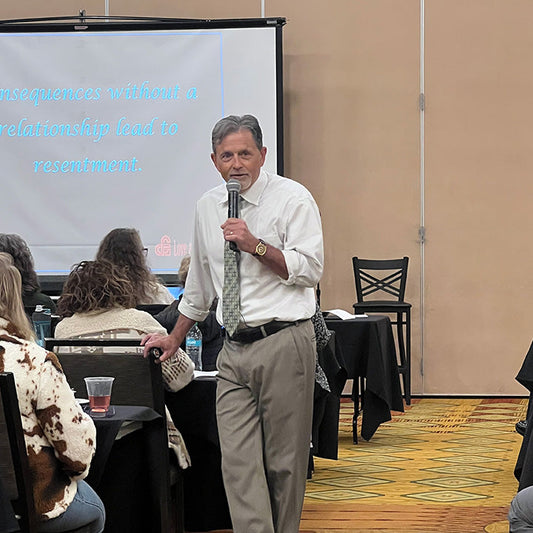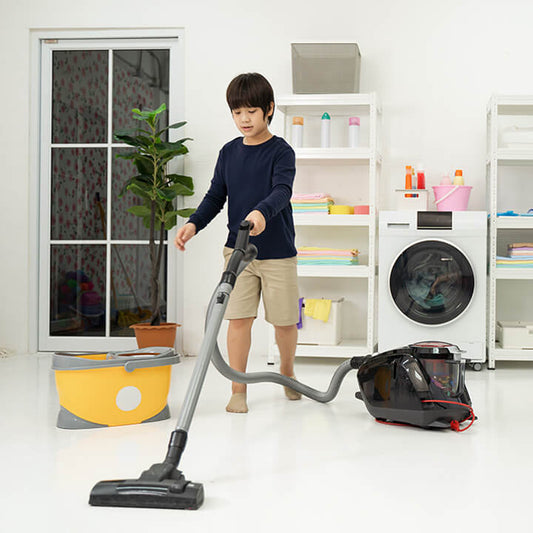For teachers, managing disruptive students is the most significant challenge to classroom management. These students can make you question your approach, test your patience, and even jeopardize your career. But here’s the good news: Kids who challenge us the most often have great potential. With the right tools and classroom management strategies, you can guide them from chaos to cooperation.
Let’s explore the teacher challenges faced when dealing with disruptive behaviors in the classroom and how these hurdles can be transformed into opportunities to create responsible, motivated students.
Why Do Disruptive Behaviors Happen?

Disruption in the classroom can arise for many reasons. At first glance, these students seem like they’re trying to derail your teaching, but dig deeper, and you might find that they’re masking their own insecurities. Perhaps a student is craving attention and needs to act out to feel seen, or a student is struggling to understand the material and is unsure of how else to act. These students could also feel overwhelmed by their emotions and be unable to regulate or express them.
In such cases, implementing a well-structured classroom management plan or classroom management techniques can provide a much-needed framework for reducing disruptions while supporting students’ needs.
What is The Cost of Disruption in Classroom?
Disruptive behaviors don’t just impact the teacher; they affect the entire classroom. One student’s defiance can spark a ripple effect, pulling others off task and draining valuable teaching time.

For Students: The Ripple Effect
Disruptive behaviors don’t just impact the teacher; they affect the entire classroom. One student’s defiance can spark a ripple effect, pulling others off task and draining valuable teaching time. A single peer’s disruptive behaviors can erode peer relationships, lead to missed learning opportunities, and degrade the self-esteem of other students. Without intervention and effective classroom behavior management, these patterns could set a dangerous precedent that will impact them far beyond the classroom.
For Teachers: A Lose-Lose Situation
You can try to ignore the behavior, but that risks losing control of the room. On the other hand, addressing it head-on can sometimes escalate the problem, leading to a power struggle that leaves everyone frustrated. Without a robust classroom management plan, teachers might find themselves losing their patience and perhaps even their passion for teaching.

Guiding Kids to Own and Solve Their Problems
How can teachers approach managing disruptive students? Whenever a student causes a problem in the classroom, one approach teachers can use is Love and Logic’s Five Steps for handling disruptive students.

The goal of this approach is to guide students to own and solve their own problem:
- Provide a healthy dose of empathy.
- Hand the problem back to the student and ask what they are going to do.
- Ask permission to share some solutions.
- For possible solutions, ask the student how they might work for them.
- Give permission to the student to either solve or not solve the problem and wish them success.
As educators, we hold incredible power to shape not only what our students learn, but also who they become. By addressing disruptive behaviors in the classroom head-on and guiding students toward responsibility, we give them skills that will serve them throughout their lives. This approach also incorporates effective teaching strategies, which are vital for managing classroom dynamics and fostering growth in students.
What Love and Logic Can Do for You?
Whether you’re a veteran teacher or just starting your career, the challenges of managing disruptive students can feel overwhelming. That’s why the insights shared in “Home and School Strategies for Creating Respectful, Responsible Kids” are invaluable. For even more ideas, read our blog: "How to Deal with Disruptive Behavior in Your Classroom?"
Key Benefits of Love and Logic
With guidance from the entire Love and Logic team, you’ll learn how to:
- Avoid power struggles that drain your energy.
- Foster accountability and self-discipline in your students.
- Set boundaries that encourage cooperation and mutual respect.
- Navigate disruptive behaviors with confidence and empathy.
- Give permission to the student to either solve or not solve the problem and wish them success.
Ready to Transform your Classroom?
You don’t have to navigate this journey alone. With the right teaching strategies, you can turn challenges into opportunities. We’re grateful for all you do as an educator and hope these tips and tools give you the support you need to guide your students toward becoming the responsible leaders that they can become.
Thanks for reading!


























